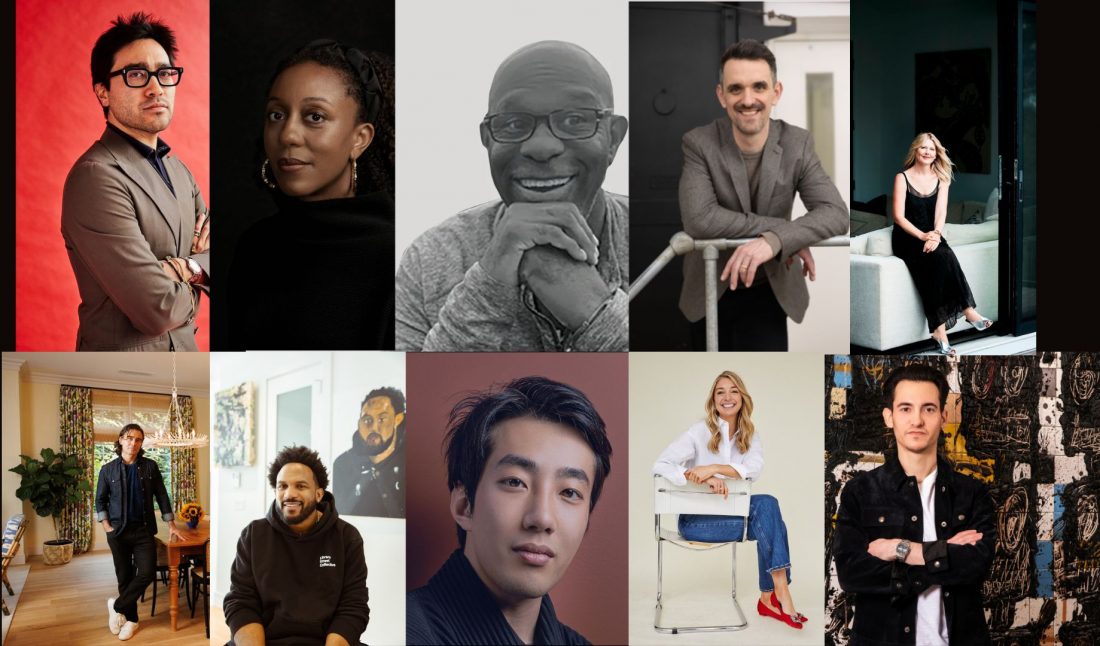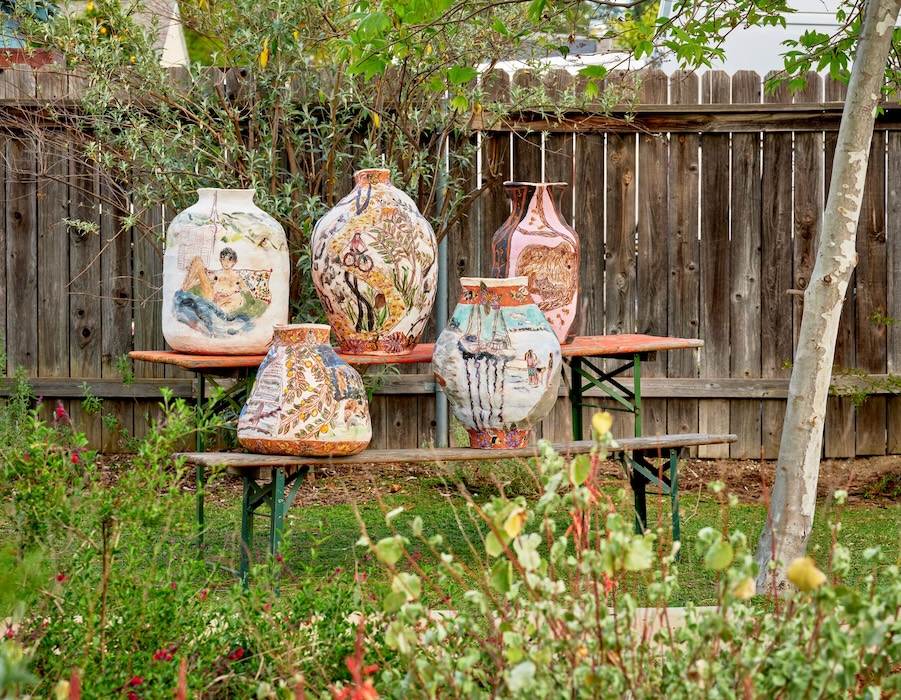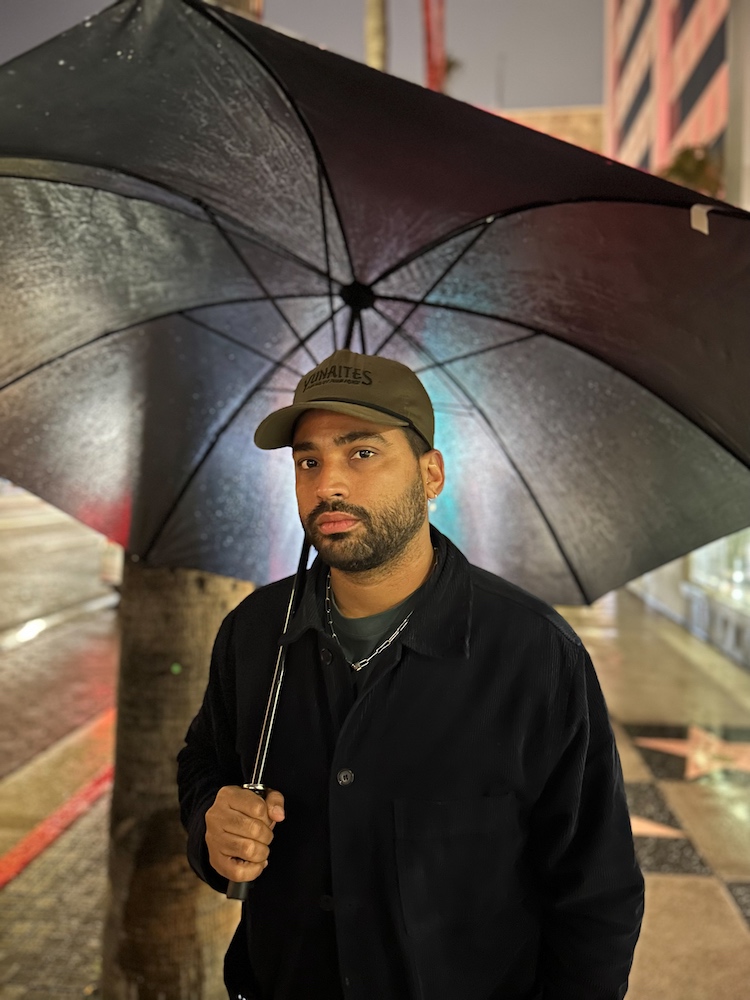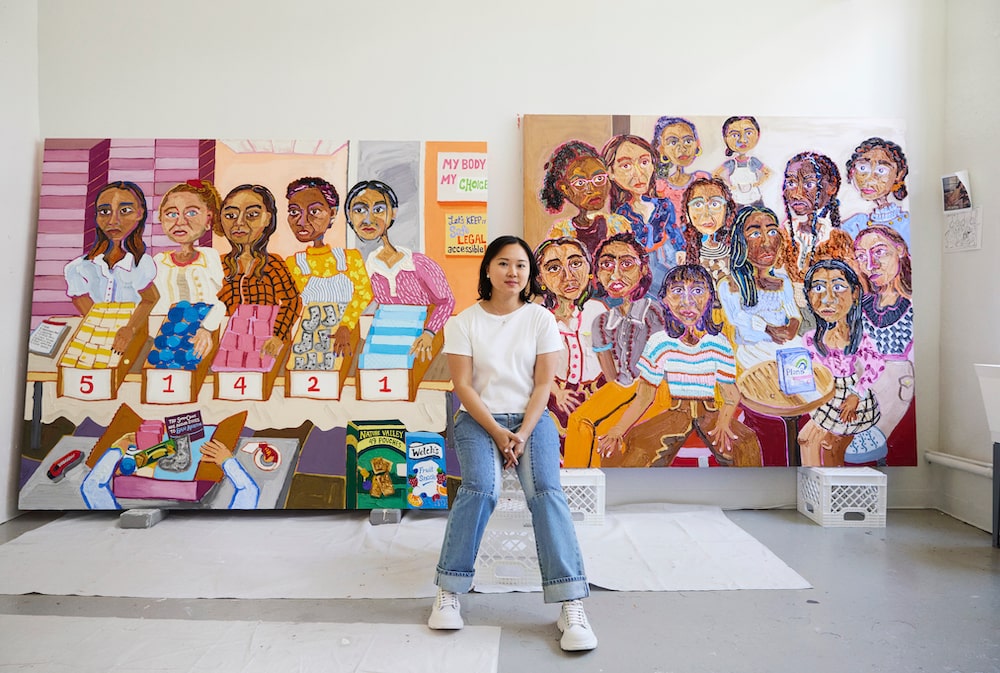With spring fairs like Frieze New York, NADA, Independent, and TEFAF taking place last week and this week in New York, we’re turning to 10 New York Collectors, from Rodney Miller, Vice Chairman of J.P. Morgan and Treasurer of the Studio Museum in Harlem; to Mike Steib, CEO of Artsy; Everette Taylor, CEO of Kickstarter, and more, to hear their advice on collecting, as well as a recent acquisition they’re excited about.
Rodney Miller, Vice Chairman of J.P. Morgan and Treasurer of the Studio Museum in Harlem
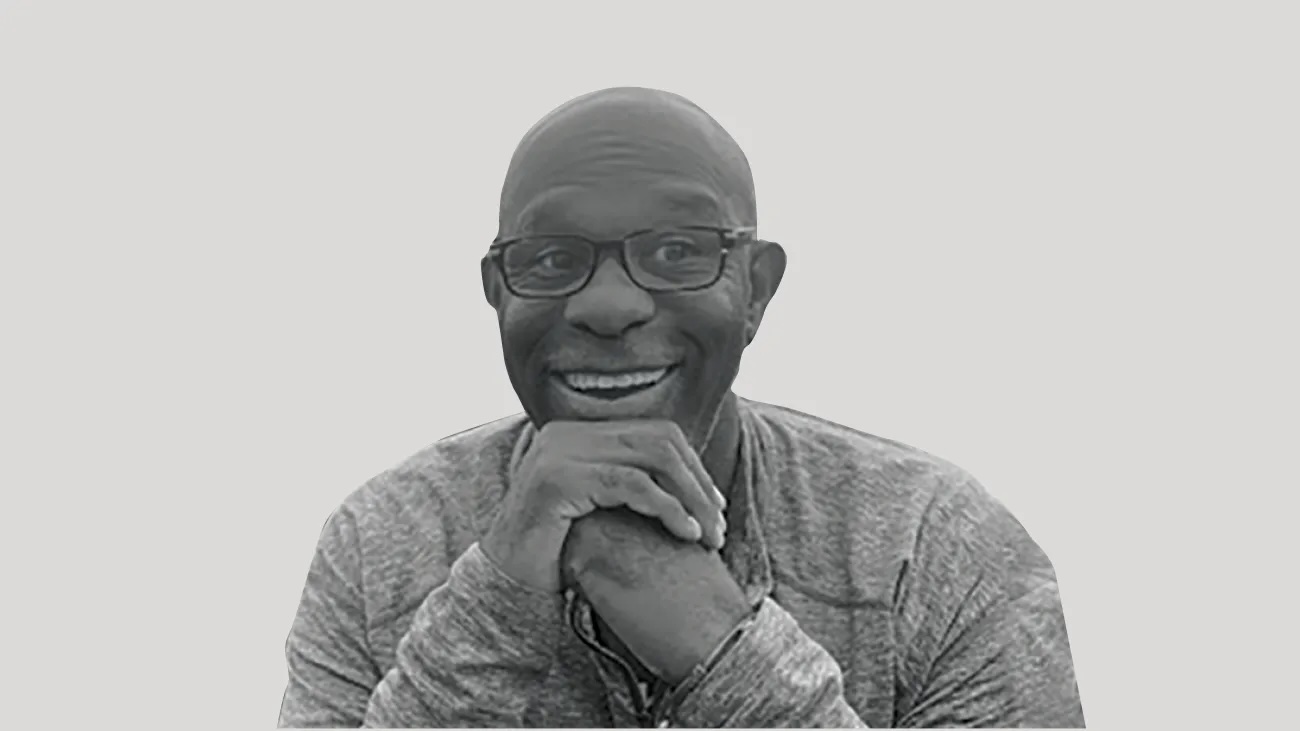 Courtesy of Rodney Miller.
Courtesy of Rodney Miller.
Rodney Miller seamlessly balances his position as Vice Chairman in the Mergers and Acquisitions Group of premier global financial institution J.P Morgan with a myriad of philanthropic endeavors—including serving as a Trustee for Harlem’s Studio Museum for more than 20 years, as well as a member of the Board of Directors of the Indiana University Foundation, co-chairing the Investment Committee. An enthusiastic art collector for 25 years, Miller centers his attention on modern and contemporary art by African American visionaries and those of the African Diaspora, placing the utmost importance on understanding the creatives behind their masterpieces.
WW: Can you share a recent acquisition you’re excited about?
RM: This is a tough question as only works that truly excite me make it into the collection. So under duress, a canvas by Meleko Mokgosi whose work is both beautiful and thought-provoking. His paintings encourage me to continue to learn.
WW: What is your advice for aspiring collectors, just getting started?
RM: See as much as you can and have fun looking. Take advantage of the tremendous resources that museums have and perhaps join the acquisition committee. Galleries and art fairs like Frieze are great sources and by all means go and see works in person as well as online.
Mike Steib, CEO of Artsy
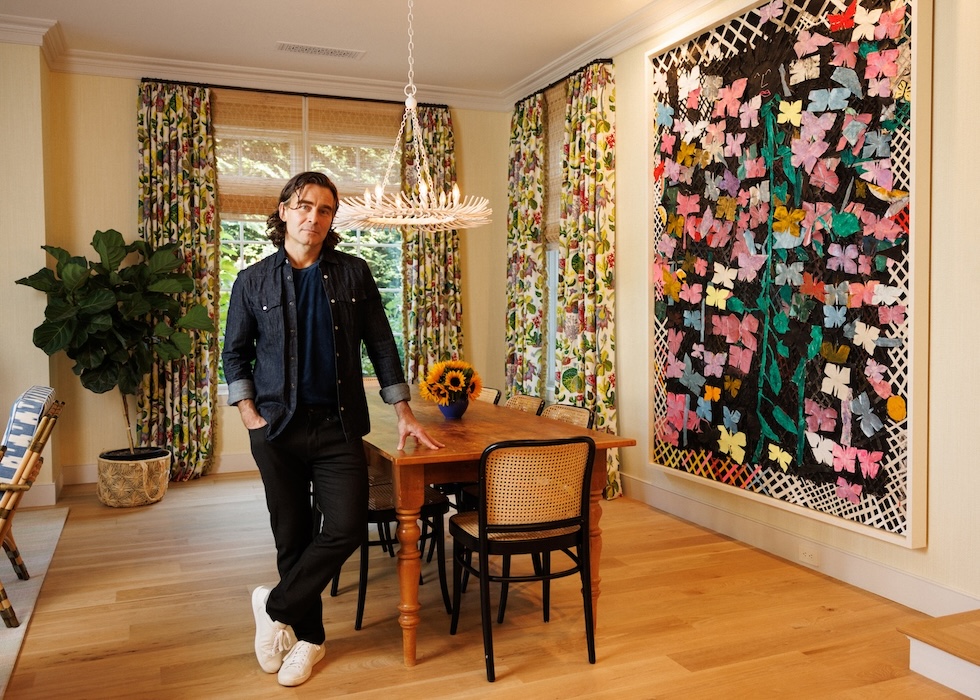 Photo by Nate Palmer, courtesy of Mike Steib. Artwork by Sojourner Truth Parsons, courtesy of the artist and Esther Schipper.
Photo by Nate Palmer, courtesy of Mike Steib. Artwork by Sojourner Truth Parsons, courtesy of the artist and Esther Schipper.
Before becoming CEO of Artsy in 2019, Mike Steib served as CEO of XO Group and held distinguished roles at Google, NBC Universal, and McKinsey & Company. In addition, Steib authored The Career Manifesto, and is the compelling host of the “Office Hours” podcast, interviewing fellow CEOs. Mike has continued to evolve Artsy into the world’s chief online art marketplace.
WW: Can you share a recent acquisition you’re excited about?
MS: I recently purchased a piece by Hugo McCloud, a fantastic artist I learned about through Sean Kelly Gallery. The piece is amazing because at first it seems like a straightforward painting of wilting flowers in a vase, but when you look closely, you can see that it’s made with many small pieces of single-use plastic. There’s clearly this commentary on the environment, though I also love how McCloud brings out the beauty of the everyday. He’s actually opening a new show at Sean Kelly in New York next week and will debut a new body of work that I’m eager to see.
WW: What is your advice for aspiring collectors, just getting started?
MS: Learn by doing. Go see lots of art. Go to the fairs. Ask lots of questions. Use the Artsy app. And buy something. You will love it. You only regret the art you don’t buy.
Maisha C. Leek, Entrepreneur
 Photo by Marquis Perkins, courtesy of Maisha C. Leek.
Photo by Marquis Perkins, courtesy of Maisha C. Leek.
At the crossroads of tech, policy, and culture, Maisha C. Leek is a prolific entrepreneur who builds and invests in trailblazing organizations. A graduate of Trinity College in Washington D.C. and the University of Pennsylvania, Leek has been an integral leader in growth stage environments and tech startups for over a decade.
WW: Can you share a recent acquisition you’re excited about?
MCL: Yes, I recently acquired original prints from two artists. I’m excited about Diana Sinclair‘s I Am The Black Gold of The Sun and Yannick Lowery‘s Afro Diving. From Sinclair, who is returning to photography after a successful run with digital art, I Am The Black Gold of The Sun is an incredible expression of her technical abilities and storytelling. She creates intimate portrayals of Black life that feel genuine and uncontrived. Her narratives depict honest stories that envision a future where Black people are limitless in self-actualization. I want to live in the world she’s creating.
As for Yanick, his series of collage work manages to bridge history with the present and future. He uses collage to bend time and tell stories that remind me that there’s nothing new in this world. He accomplishes this in a manner that ignites my curiosity about delving into the past and underscores our collective ignorance of history. This series is very dreamy and ephemeral. So it lives in my bedroom.
WW: What is your advice for aspiring collectors, just getting started?
MCL: Collecting may seem intimidating, at first. It’s important to remember that there is something out there for every collector in a range of prices. Concentrate on what inspires you, sometimes art can call to you. Although art collecting is often associated with investment, I believe it holds greater significance when considering how a piece fits into my own life, my own space, reflecting my understanding of the world. These are personal choices that should center anyone’s approach to collecting.
Lorin Gu, Founding Partner of Recharge Capital
 Courtesy of Lorin Gu.
Courtesy of Lorin Gu.
Lorin Gu, a graduate of Harvard University and the Wharton School of Business at the University of Pennsylvania, is the Founding Partner of multi-strategy investment firm Recharge Capital. Gu also guides the forward-thinking Recharge Foundation in nurturing artistic and cultural enterprises by way of vibrant exhibitions and initiatives. Visual arts and jewelry designs are placed at the heart of the collection thesis, whose meaningful partnerships extend to international art institutions and the granting of illustrious awards to the next generation of creative pioneers.
WW: Can you share a recent acquisition you’re excited about?
LG: I recently took delivery of Emily Mae Smith‘s first sculpture, Gazer, based on our existing Cassiopeia painting. The juxtaposition between the painting and the sculpture results in a captivating interplay across different artistic mediums.
WW: What is your advice for aspiring collectors, just getting started?
LG: Creating a meaningful and personalized art collection requires the cultivation of a well-defined thesis and a disciplined approach to acquisition. Upon entering the art world, people are often inundated with a multitude of offerings, leading to a temptation to collect pieces that merely resonate with them in the moment. However, for artworks to maintain enduring resonance, it is key to engage in introspection, solidifying the thematic essence and core values that the collection seeks to express. Through this process, clarity emerges regarding which artworks align with the collection’s vision, facilitating a dialogue among the pieces themselves.
Leo Rogath, Owner, Founder, and Director of Prince & Wooster
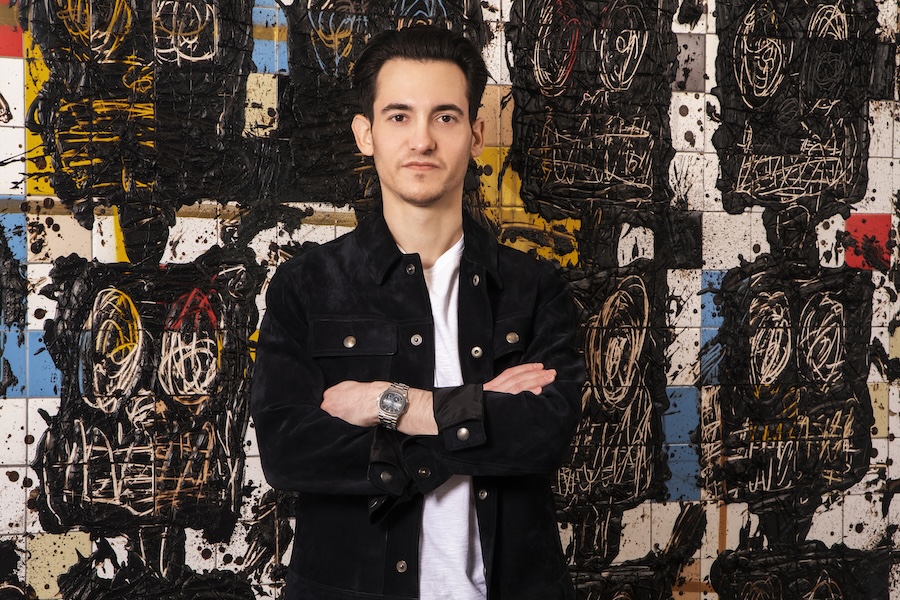 Courtesy of Leo Rogath.
Courtesy of Leo Rogath.
Leo Rogath studied art history at New York University and began his career at the esteemed Christie’s auction house. As the Founder of modern and contemporary art gallery Prince & Wooster, Rogath has over a decade’s worth of experience advising for private collections and managing a premier permanent collection. In collaboration with over twenty global art institutions, Rogath has loaned over two-hundred creative works, and is both a member of the Tate Acquisition Committee for North America and a groundbreaking organizer of pivotal donations to the Whitney Museum of American Art and ICA Miami. The admired Prince & Wooster collection includes treasures by Picasso, Basquiat, Magritte, Calder, Haring, Warhol, Hockney, de Kooning, and a great deal more.
WW: Can you share a recent acquisition you’re excited about?
LR: A recent acquisition I am excited about is a group of three Picasso works I recently acquired in Paris—a painting from 1953 of Francois Gilot and Jacqueline Picasso, an ink drawing from 1938 of Dora Maar, and an incredible bronze from 1950 of a winged centaur with an owl. The works are of fantastic quality and remind you of the range and depth Picasso consistently displayed in every and any medium. I also love and collect his works on cardboard—a greatly underappreciated medium for Picasso. Great artists can always surprise you.
WW: What is your advice for aspiring collectors, just getting started?
LR: Buy what you love. Buy with your eyes and not your ears. When you buy what you love—art that you viscerally connect to—there’s no downside. When you follow the crowd and trends, you’re exposed to the constant changing of tides and the short attention span of the art world. Building a collection is a reflection of your vision and how you see the world around you. Build a thesis and mission, whether it’s specific or general, and stick to it with discipline. My mission is buying quality from artists that I believe in. I don’t limit myself to an era, genre, region, etc. I don’t want to buy art based on anything but belief in quality. (Also, take the time to see the auction previews, there are many amazing artworks in such a wide range of genres and eras which may not be seen in public ever again.)”
Joe Elliott, President and Chief Commercial Officer of Artlogic
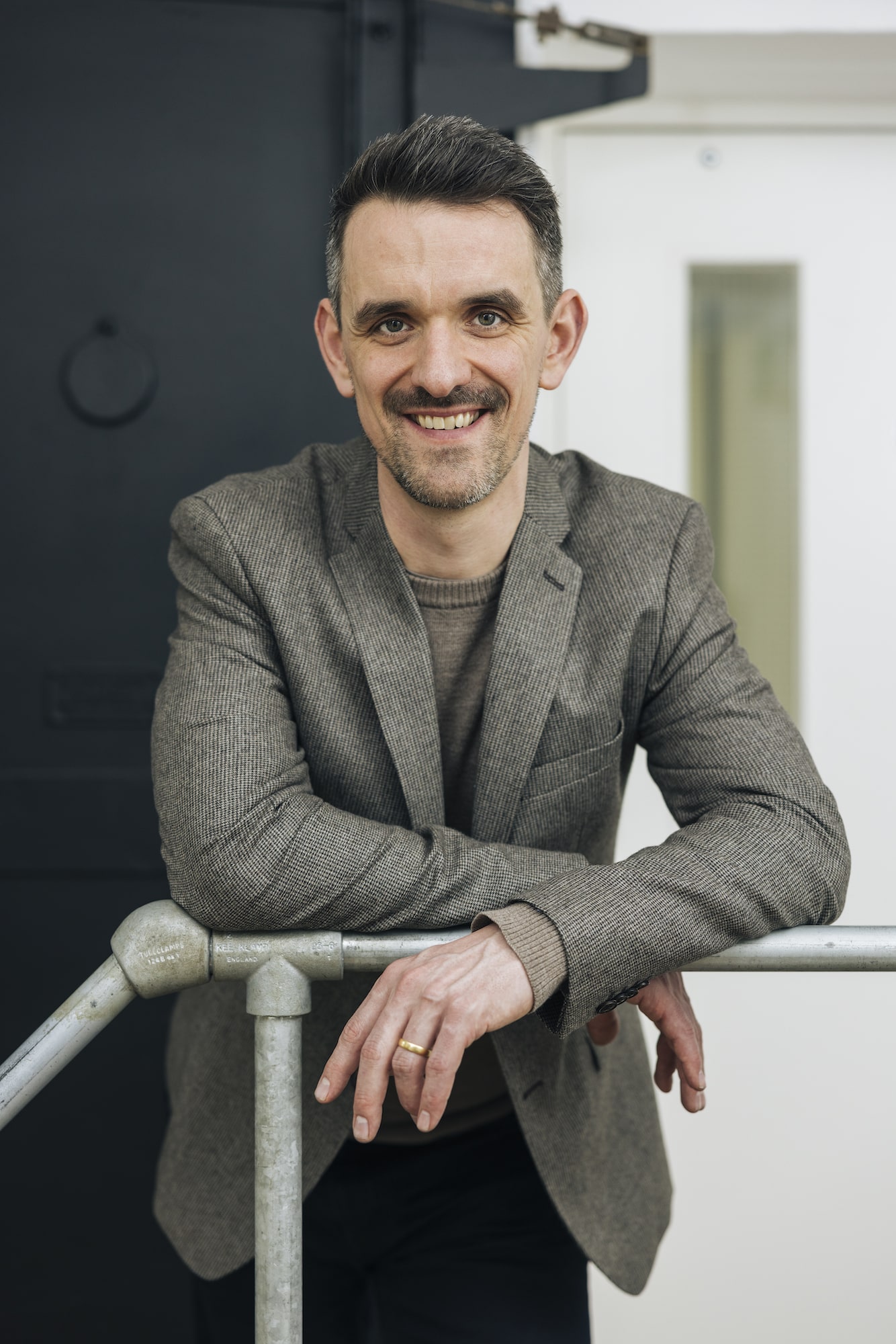 Courtesy of Joe Elliott.
Courtesy of Joe Elliott.
At Artlogic, President and Chief Commercial Officer Joe Elliott uplifts public connection with the ever-evolving art industry and simplifies the business process. He holds a BFA in Illustration from the Rhode Island School of Design and an MA in Visual Arts Administration from New York University. Elliott gained a wealth of experience in New York City’s commercial galleries, seamlessly transitioning to the art-tech start-up space and joining Artlogic in 2012. Managing a merger with ArtBase & exhibit-E in 2022, Elliott steers the company into the future with his ardent appreciation of the ongoing and nuanced dialogue between creatives, galleries, and collectors.
WW: Can you share a recent acquisition you’re excited about?
JE: My most exciting recent purchase was a Letha Wilson work acquired through GRIMM Gallery during her first exhibition in the gallery’s London space. Letha, who is based in Brooklyn, NY, creates beautiful and very physical artworks that integrate photography and sculpture. I was lucky enough to discover Letha’s work whilst we were building GRIMM’s new website onto the Artlogic platform before eventually getting to experience her works in person at Frieze London.
WW: What is your advice for aspiring collectors, just getting started?
JE: Do all you can to meet the artists before purchasing a work. Lean on galleries to help facilitate introductions and if you can organize a studio visit, even better. This level of access gives you a far more insightful view into the artist’s practice, what drives and what inspires them. I know almost all of the artists in my collection personally, many of them are great friends. Being able to watch their careers grow and flourish over the years is one of the most rewarding parts of being a collector.
Jeanne Masel, Founder and Chief Curator of ART FOR CHANGE
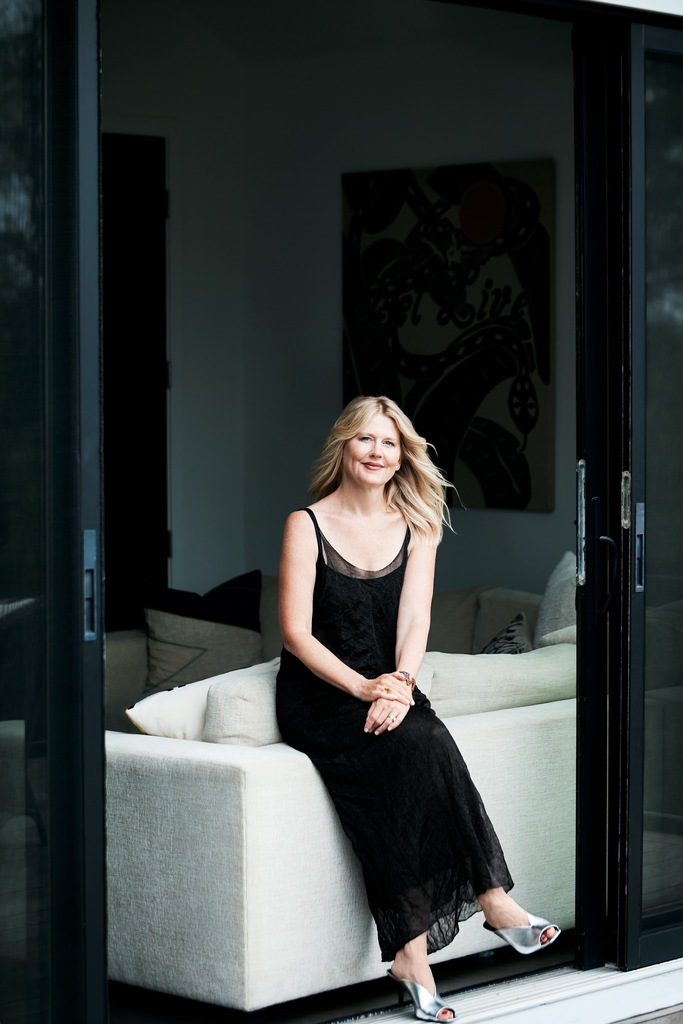 Portrait of Jeanne Masel; photo by Weston Wells, courtesy of ART FOR CHANGE.
Portrait of Jeanne Masel; photo by Weston Wells, courtesy of ART FOR CHANGE.
With a master’s degree in Contemporary Art from Sotheby’s and a certificate of Fine Art Appraisal from Pratt, Jeanne Masel founded ART FOR CHANGE in 2018. Fusing her devotion to social justice and the arts, the revelatory platform links collectors who are interested in sparking change with cutting-edge contemporary artists. Masel and her skilled team meticulously select creatives and their works to be matched with a pertinent nonprofit initiative. In addition to lending artworks to the world’s leading art institutions, Masel is a member of the Brooklyn Museum Board of Advisors, the Whitney Museum’s Director’s Council, and the Leadership Council at Independent Curators International, as well as President of the Jeanne and Dennis Masel Foundation—fiercely supporting community-led endeavors for a brighter world for all.
WW: Can you share a recent acquisition you’re excited about?
JM: I am really excited about a large-scale Summer Wheat mural we commissioned for our bathroom in our new Park Slope townhouse. She is an artist whose work I adore, we’ve done several collaborations with her as well for ART FOR CHANGE, and this was an exciting and bespoke work to commission. I love how fun and playful it is and the color always brightens my day. The bathroom has become my favorite room in the house!
WW: What is your advice for aspiring collectors, just getting started?
JM: My advice for any aspiring collectors is to buy what you love, take time to connect with artists, visit lots of studios, and take your time building your collection. Also, one great way to start out is with limited editions by artists you admire. Limited editions are at a more approachable price point and they allow you to live with the art and decide if you want to buy an original work by the artist. Last, read a lot and visit galleries as much as you can. I also recommend signing up for newsletters, which often share news and opportunities for collectors first. ART FOR CHANGE is a great platform for discovery of course, and as a collector myself we put a lot of care into our newsletters, providing our readers insider information and access to some of the contemporary art world’s rising stars.
Hannah Howe, Deputy Chief Development Officer for Individual Giving at The Metropolitan Museum of Art
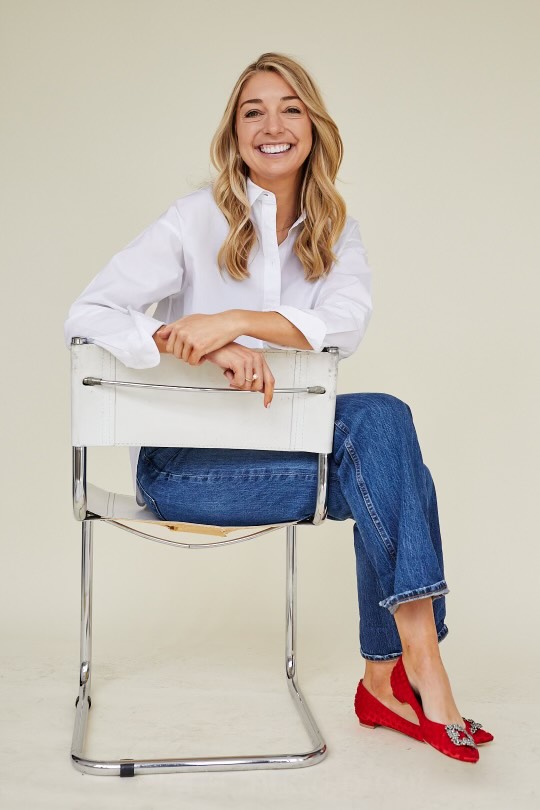 Photo by Elena Mudd, courtesy of Hannah Howe.
Photo by Elena Mudd, courtesy of Hannah Howe.
With a BA in Art History and Visual Art from Bowdoin College, as well as a master’s degree in Art History from The Institute of Fine Arts at NYU, Hannah Howe brings an abundance of knowledge to her role as Deputy Chief Development Officer for Individual Giving at The Metropolitan Museum of Art. Profound experience at MoMA PS1, the Hammer Museum, the Center for Curatorial Leadership, and more, positions Howe as an industry figurehead.
WW: Can you share a recent acquisition you’re excited about?
HH: A work close to my heart is a vibrant drawing by EJ Hill, titled joy studies (long way up) from 2020. I look at it every morning when I walk out the door. It’s my daily talisman, reminding me to embrace and enjoy life’s highs and lows. Depicting an undulating rollercoaster—a consistent source of inspiration for EJ—climbing into a sky full of cumulus clouds, it symbolizes the journey of joy. My personal connection to EJ’s work spans years in New York and Los Angeles, including witnessing his early rollercoaster drawings at the Studio Museum in Harlem in 2016, and then his powerful durational performance when I worked at the Hammer Museum in 2018. For Made in L.A. 2018, EJ stood for six days a week, nine hours a day, and six on the weekends at the top of a pedestal resembling an Olympic medal pyramid. It was an astonishing feat and an unforgettable summer. Now, in my role at The Met, I am very proud to support bold, ambitious projects by living artists, organized by a tremendously thoughtful and forward-thinking set of curators.”
WW: What is your advice for aspiring collectors, just getting started?
HH: Seek out opportunities to meet and understand, on a personal level, the artists you hope to collect. Visit open studios at graduate programs, read interviews, attend live conversations, and be present at gallery or museum openings where you might have the chance to congratulate the artist in person. All of these touchpoints will accumulate beautifully, providing you with a rich understanding of the artist’s inspiration and growth, and infusing the object you live with with exponentially more meaning.”
Christopher Omachi, Associate Director of Business Development and Content Marketing Partnerships at Audible; Independent Art Advisor
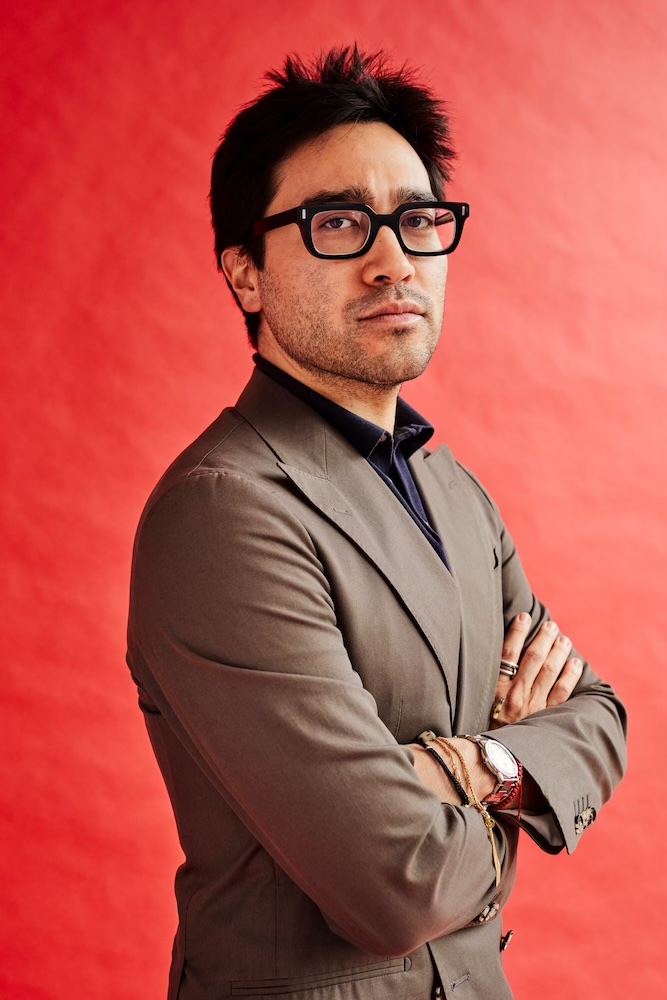 Photo by Elena Mudd, courtesy of Christopher Omachi.
Photo by Elena Mudd, courtesy of Christopher Omachi.
With more than 12 years experience within gallery settings and art advisory firms—including the Peggy Guggenheim Collection, Gagosian, Pace and more—Christopher Omachi now serves as Associate Director of Business Development and Content Marketing Partnerships at Audible, as well as an astute independent art advisor. A graduate of Bowdoin College in Art History, Omachi is on the Board of Directors at Broadway Housing Communities and Sugar Hill Children’s Museum of Art and Storytelling in Harlem, and serves on the Bowdoin College Museum of Art’s Collectors Collaborative.
WW: Can you share a recent acquisition you’re excited about?
CO: I recently acquired a beautiful little painting by Gonzalo Garcia, an artist based in Mexico City. Garcia was kind enough to donate this work to benefit Broadway Housing Communities and Sugar Hill Museum of Art and Storytelling at our gala last year. I am honored to serve on the board of these institutions which provide permanent housing for thousands of low income families in Harlem, high quality early childhood education, and art as a supportive and integral aspect of living. This painting, while immediately appearing to depict swans in repose, also reveals elements of human flesh and corporeality—to me, embracing the connection of human life to animals and our greater natural world.
WW: What is your advice for aspiring collectors, just getting started?
CO: Collect what you love! If you can’t afford an artist’s unique works, you may be surprised at what you find from editioned pieces or even posters and ephemera. And find a good framer, investing in a thoughtful custom frame can really elevate what’s inside it.
Everette Taylor, CEO of Kickstarter
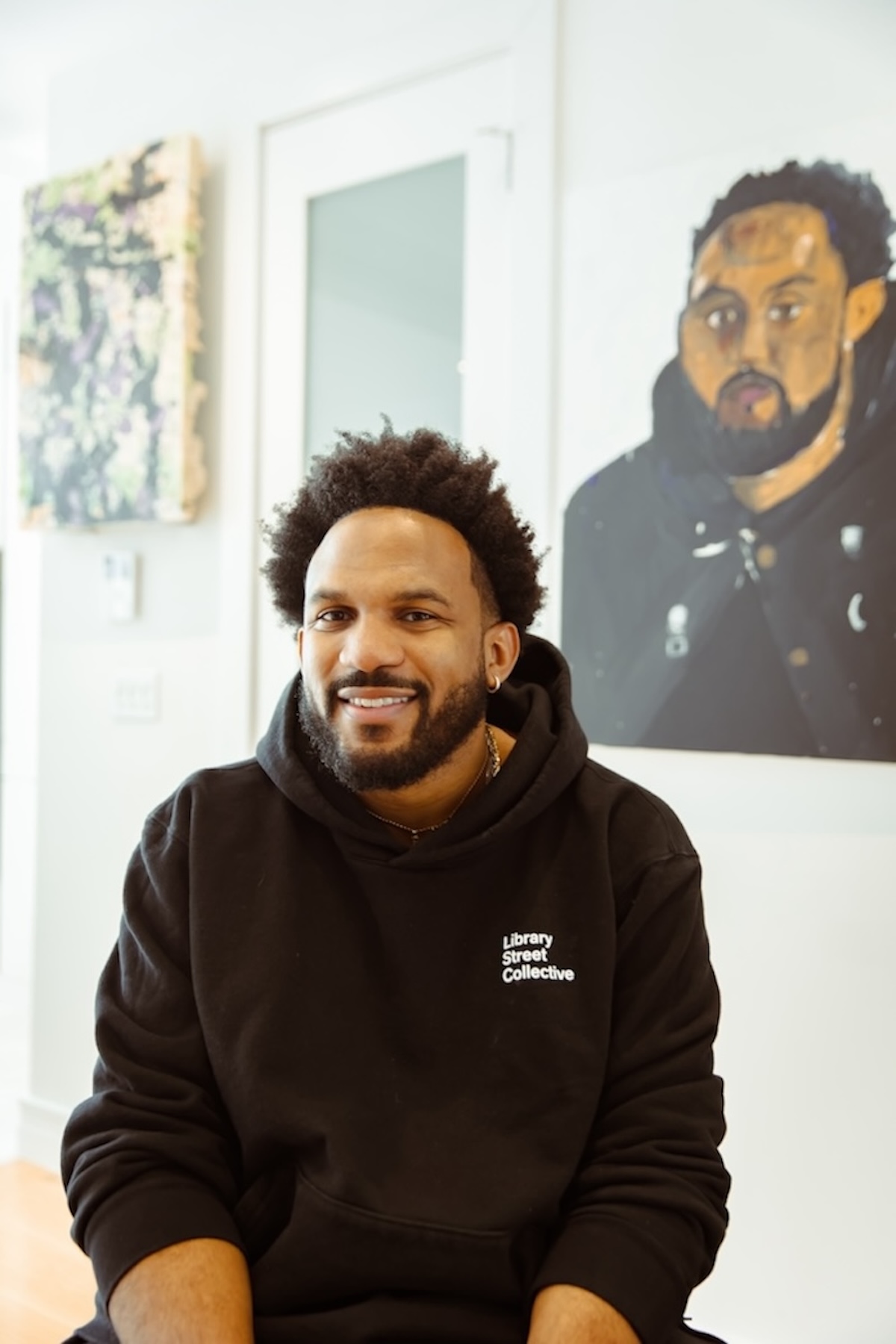 Portrait of Everette Taylor with artworks by Henry Taylor and Kevin Beasley;
© 2023 Kolin Mendez.
Portrait of Everette Taylor with artworks by Henry Taylor and Kevin Beasley;
© 2023 Kolin Mendez.
As the innovative CEO of Kickstarter—the world’s principal crowdfunding platform for creative ventures and one of Time Magazine’s 100 most Influential Companies—Everette Taylor’s prodigious work has a resounding impact on the art industry and the creator economy at large. A zealous Member of the Board of Directors for 1stDibs, the eminent design-focused online marketplace, Taylor formerly served as CMO of Artsy.
WW: Can you share a recent acquisition you’re excited about?
ET: I recently acquired my first Stanley Whitney piece and that’s been a very special moment for me. I’ve been a huge admirer of Stanley Whitney and his work, but more importantly, he’s just a cool dude that’s been kind to me as a young collector. At this point in my life, I’m trying to embrace joy as much as possible and Stanley’s work always evokes a sense of joy for me. It feels good to be able to walk into your home everyday and see a work that gives you positive feels every time you walk in. I would also be remiss not to shout out Ashley Stewart Rödder at Gagosian who was intentional about giving me access as a black collector, I’m grateful for that.
WW: What is your advice for aspiring collectors, just getting started?
ET: Use your own eyes and follow your heart. I don’t use advisors or let others influence how I collect. I love what I love. You’re the one who has to live with it and it’s your hard-earned money. Every work I have in my home has a personal story attached to it and that’s special to me.
When starting off, just go see as much art as possible and start defining what your taste is. Use as many digital platforms as possible to explore art and different artists… from 1stDibs, Artsy, Instagram, etc. Build genuine relationships with artists, they’ll be your biggest advocates as a collector. Make studio visits, support exhibition openings, and buy the work of artists you love and support.






